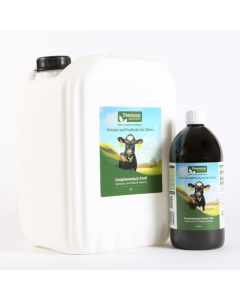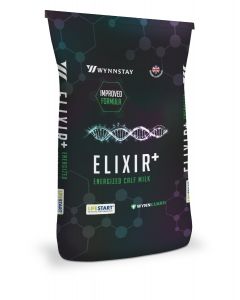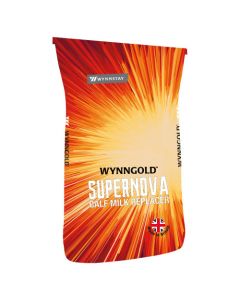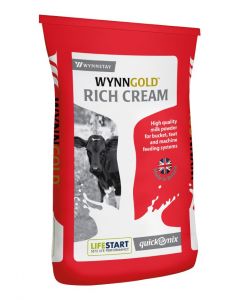Deconstructing calf milk replacer with Trouw Nutrition
- By Aaron Brown
- 4 Jun 2024
- 0 Comments

The digestive tract of the newborn calf is designed for digestion of proteins, fatty acids and sugars from cow’s milk, which should be the basis of calf milk replacers (CMR) fed.
Energy
Energy intake is the major limiting factor in young calf growth and development and plays an important part in successful immune responses to early life disease. The 40kg calf has a metabolisable energy (ME) requirement of 7.8 MJ/day in thermoneutral conditions; a figure which increases with colder environments and immune stressors.
Fat, protein and carbohydrates all provide energy to the calf, however, fats provide over double of that in lactose and over 1.5x of that in proteins, so that increasing fat is the most effective way of increasing energy density in CMR. The calf can best utilize the vegetable oil when the fatty-acid make-up is closest to that of cow’s milk, containing a high proportion of short- and medium-chain fatty acids; best provided through a combination of palm and coconut oil. Increasing proportion of long-chain fatty acids can cause inflammation in the small intestine, leading to calf diarrhoea. Adequate homogenization (to reduce fat globule size) will further support CMR fat digestion.
Protein
Calves have a low maintenance requirement for protein (~40 g/day crude protein for the 40kg calf), but when provided with larger feeds of CMR and greater ME intake, this will significantly increase due to the high protein requirement for tissue and skeletal growth. As the esophageal groove is formed in preparation for milk feeding, milk feeds bypass the rumen to the abomasum, and the calf has an abundant supply of enzymes to digest dairy proteins and sugars, whereas it takes longer for them to sufficiently utilise starches and other carbohydrates. The fibre content of CMR should be negligible to ensure calves are gaining optimal digestion of the feed in this early stage.
The casein in skim-based milk replacer is digested differently than whey, and is a much slower process, resulting in less digesta entering the small intestine at one time. Optimal quality of skim is based on low heat-treatment and adequately high inclusion and as such should be positioned as the first ingredient on the label. Current research shows digestibility of either of these dairy products is greater than 90% when they are of high quality, allowing them to convert feed to gain very efficiently.
Everything in between
The nature of the various dairy powders is that, although butterfat is removed, large concentrations of lactose are still present and will impact the overall nutrient profile of the CMR. Lactose concentration is highest in whey permeate and sweet whey powder (>70%) and approximately 50% of skimmed milk powder, whey protein concentrate and delactosed whey powder. By default, lower protein (<22%) and oil (<20%) CMR will have a higher proportion of lactose unless dairy protein has been substituted with plant protein.
Increasing lactose percentage is a driver for osmolality (amount of solute per kg of solution) which increases pressure on the intestinal wall resulting in a greater risk of compromised nutrient absorption, diarrhoea and abomasal bloat. Osmolality is also elevated by ash content (minerals) which will typically be 6.5-7% where high quality dairy products are used.
By focusing on composition of milk replacer to ensure these provide quality ingredients and digestible fat/protein, you can insulate them from early-life stressors and optimise return from feed.














